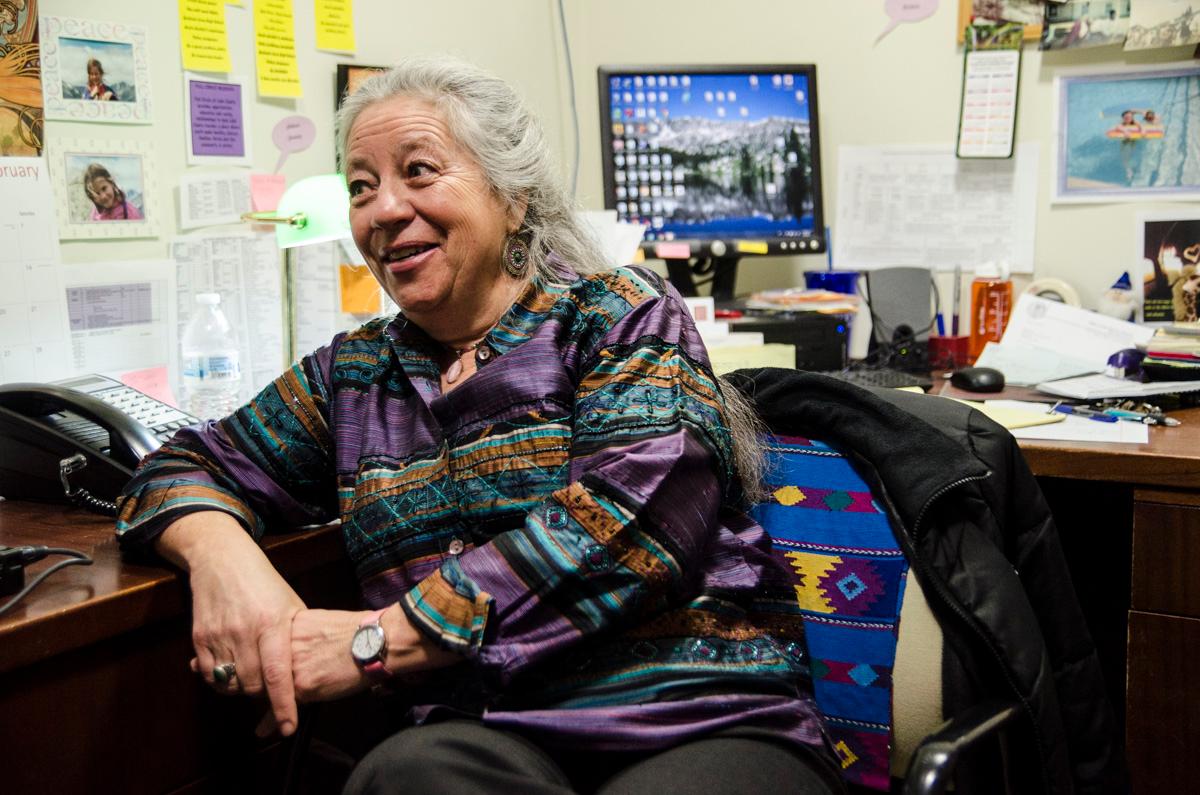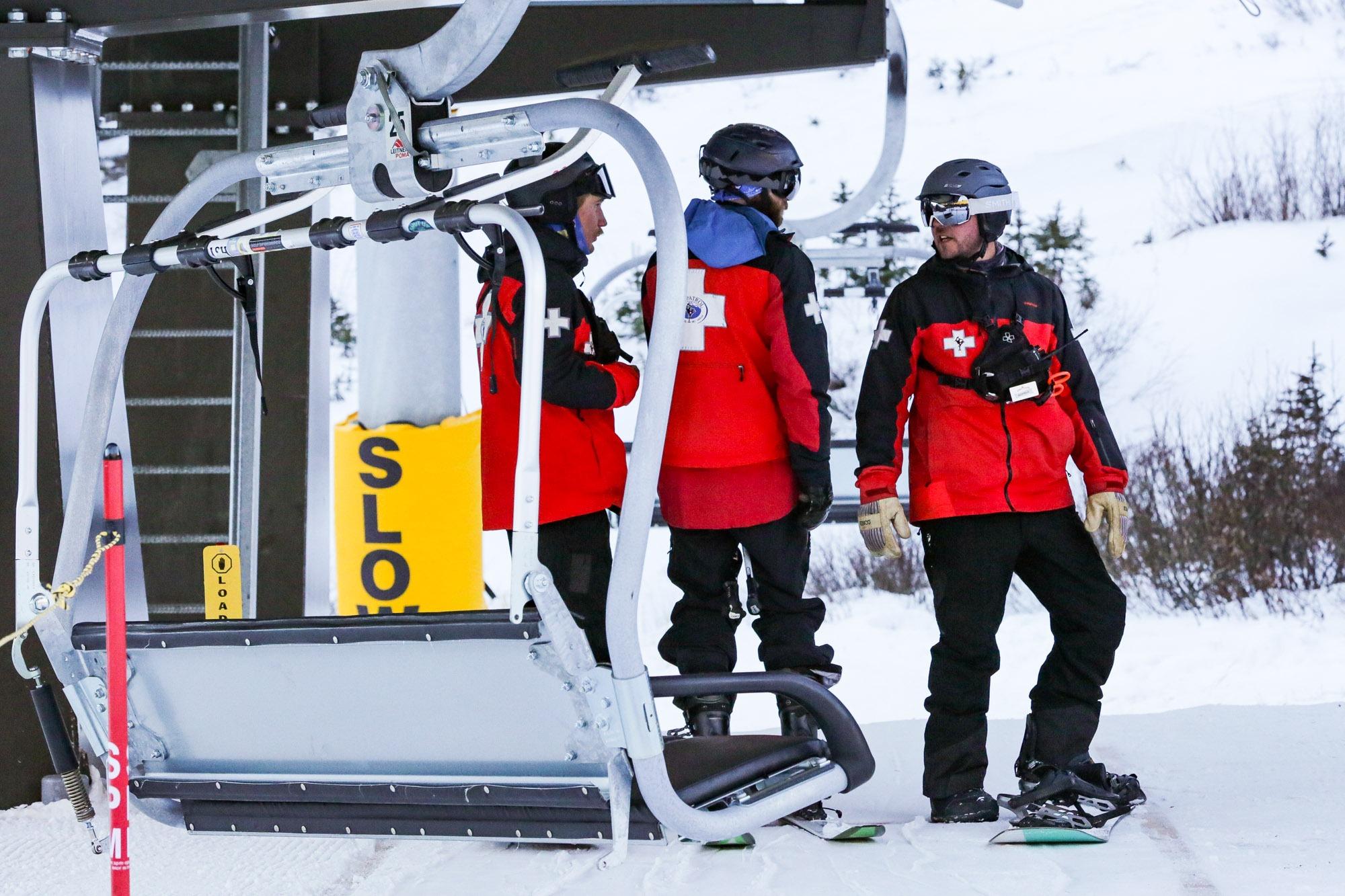
Teenage girls in Leadville have typical adolescent complaints like how small-town life is boring and how they’d rather be surrounded by beaches instead of mountains. But they have more substantial issues to deal with too.
Like many of her peers' parents, Jazlin Carbajal’s mother works some 40 miles north of Leadville in the Vail Valley. While thousands of immigrants that work in resorts, hotels and restaurants in Summit and Eagle counties make ends meet by living in crowded trailers there, others live in more spacious -- and affordable -- digs in Leadville. The tradeoff is distance.
“Sometimes you worry,” said Carbajal, 15. “Because they’re driving and the weather’s really bad.” 
The arrival of thousands of Hispanic immigrants in the last few decades has transformed the mountain town famous for its rowdy mining history and role in “The Unsinkable Molly Brown.” These days, social service agencies say its demographics and poverty rate have more in common with an urban area like Denver than its mountain neighbors. Still, residents describe it as a tough, but rewarding place to make a living.
Workers commuting to Eagle County must traverse two mountain passes on Highway 24. For those heading northeast to Summit County, Highway 91 summits Chalk Mountain before arriving at Copper Mountain and Interstate 70. Some workers take buses from Leadville, but many commute by car.
An analysis of state data shows more accidents occur in ski season -- especially in March -- when workers are in demand but roads are most dangerous.
District statistics show about 31 percent of Lake County parents work in Summit or Eagle counties. Just 27 percent work in Lake County. For students, simple tasks like finishing homework or getting to the library can be tough when parents are gone and money is tight.
“Sometimes I hear their stories, and they are jaw-dropping,” said Caroline Koehler. She works for the non-profit Full Circle in Leadville which helps poor families. Koehler teaches a “girls circle” class at Lake County High School. “They come into class and say things like ‘I didn’t have wi-fi because we didn’t have electricity’ and that is normal [to them].”
Education achievement gap challenges
Like many school systems, the Lake County School District is grappling with a huge student achievement gap. White students outpace their Hispanic counterparts on standardized test scores:
About three-quarters of the students receive free or reduced lunch, which is a typical metric districts use to measure poverty.
The district has struggled for decades to serve immigrant families. A 1993 Denver Post report said county officials at the time wanted employers in Summit and Eagle counties to provide housing for their workers.
"We think the people who employ them have some responsibility in helping us educate the children of those families," Leadville Superintendent Jim McCabe said at the time.
In a 2012 improvement plan, the district said the magnitude of its performance challenges “can be fairly and reasonably described as huge [emphasis original].”
“Our instruction and professional practices are not producing adequate student growth. Students are not catching up, keeping up or moving up. Growth gaps are not closing. Students who are English learners are not receiving adequate or appropriate instruction. Overall there are not systemic supports in place to support effective instruction and effective instruction is not occurring,” the district’s plan says.
But while current Superintendent Wendy Wyman acknowledges the challenges at hand, she paints a rosier picture about what the solutions are.
"I don’t think resources are the only answer," Wyman said, adding that the district is focusing more on how resources are spent. (The district spent about $1,500 less per pupil this year than the state average.) Since the district's 2012 assessment, Wyman has developed a turnaround plan with the help of the state Department of Education.
The plan's main thrust is to institute rigorous teaching models for the district to follow. More resources are going to help English language learners, which make up 35 percent of the student body. Other aid includes state help in landing federal grants that allow the district to offer more after-school programs.
The efforts appear to be paying off. In 2014, Lake County School District saw its accreditation rating jump enough that it is no longer on the state's "accountability clock" that could have lead to sanctions.
"Root causes such as those we have identified are complex and come into existence over a long period of time; it takes sustained time and effort to implement lasting reform that affects student outcomes," Wyman said.
Still, two of the district’s schools are part of the state Department of Education’s Turnaround Network, a voluntary program that provides training and other resources. Peter Sherman, who leads the Turnaround Network, said the district’s improvement plan has “gained momentum.”
Changing demographics
The many Hispanic families that moved to Leadville in the last 25 years have transformed the town. Recent U.S. Census Bureau data show Hispanics make up 33.8 percent of Lake County’s population, up from 24 percent in 1990. The town was in hard times back then, after the Climax mine closed in 1987 and put 3,200 people out of work. The mine has since reopened but employs only a few hundred people.

Alice Pugh, the executive director of Full Circle, the non-profit agency in Leadville that provides social services to children and families, says people have been “eking out an existence” for the last 30 years.
“The economy of Leadville is as low as I’ve seen,” Pugh said. “I always thought our slogan should be ‘this is not for the weak of heart.’ ”
The overall poverty rate in Lake County has remained relatively stable over the last decade. But the child poverty rate is up nearly 10 percentage points since 2005.
Down the street from Pugh’s office in historic downtown, the Rev. Ali Lufkin is working to bring together all the old miners, ski bums, and Hispanic service workers that make up the new Leadville.
She serves lunch six days a week at St. George’s Episcopal Church, but stresses it’s not a soup kitchen. “This is a community table, not just a table of the people who have some kind of a problem,” she said.
The mayor shows up every so often for lunch, and volunteers perform culinary gymnastics to produce a healthy meal. It's here Lufkin sees the dire need of many of the town's residents.
“This is a really difficult town to live in. There’s not industry here that people can be employed very easily without spending half their paycheck on childcare and gas,” she said. “They end up really needing the food to supplement the rest of the bills. They’ve called it the last affordable place to live in Colorado.” 
The efforts have paid off, in at least one way. Lufkin told the story of William Anthony “Bottles" Bartoshevich, who many knew as the town drunk. He had come to the meals for years, and eventually started working at the church on Saturdays. “He was grumpy; really really gruff, but loved by everybody at the same time,” she remembered.
One day, he didn’t show up to cook. Volunteers and staff found him on the floor of his apartment, where he had suffered a stroke.
“He died a couple of weeks later, but he died surrounded by people who knew him,” Lufkin said. “He would have been on the floor of his apartment, and not found until the rent wasn’t paid or someone wondered why there were no tracks in the snow.”
Pugh said it’s that type of community that makes Leadville a special place. “The soil up at 10,000 feet is very hard scrabble, very rough and rocky. It’s hard to get your roots in. But once those roots are here, the most incredible wild flowers bloom.”
This story is part of our ongoing exploration of Colorado kids who are living in poverty, how it affects their lives and our common future. We'd like to hear your ideas about about what can be done about child poverty in Colorado. Share your thoughts through our Public Insight Network.
Editor's Note: An earlier version of this story incorrectly stated the ski resort at I-70 and Highway 91. It is Copper Mountain, not Beaver Creek.








